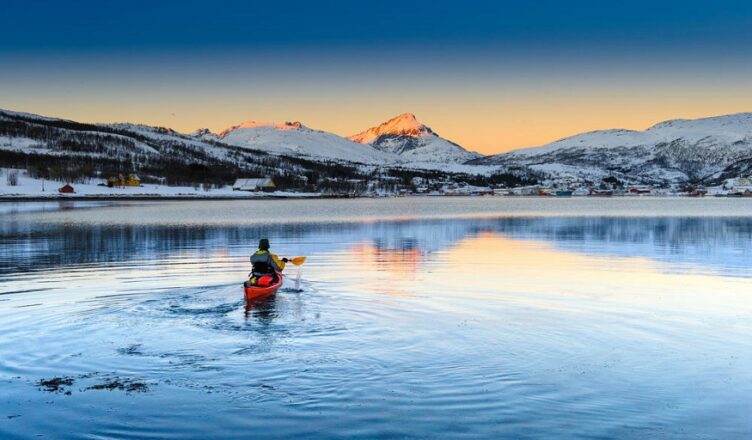Winter kayaking offers a unique and serene experience, allowing you to explore nature’s beauty while most people are tucked away indoors. However, paddling during the colder months requires proper preparation to ensure a safe and enjoyable trip.
Choosing the Right Gear
The key to a successful winter kayaking trip is having the right equipment. Let’s break down the essentials:
1. Kayak selection: Choose a kayak designed for cold water conditions, with features like a closed cockpit and ample storage for your gear. The folk at Canyon Sports say that kayak rental will ensure you find a kayak to suit your needs.
2. Paddles: Choose a paddle made from lightweight, sturdy materials like carbon fiber or fiberglass. These materials perform better in low temperatures and resist icing.
3. Clothing: Layering is crucial for staying warm and dry. Start with a moisture-wicking base layer, followed by an insulating mid-layer, and finish with a waterproof outer layer.
4. Footwear: Keep your feet warm and dry with neoprene boots, dry suit socks, or waterproof shoes.
5. Gloves: Protect your hands from the cold with insulated gloves that attach directly to your paddle.
6. Personal flotation device (PFD) and safety gear: A well-fitting PFD is essential, and don’t forget a whistle, towline, and knife for added safety.
Planning your Winter Kayaking Trip
A well-planned trip can make all the difference. Here’s what you should consider:
1.Research destinations: Look for winter kayaking spots with calm waters and minimal ice.
2. Understand weather patterns: Check forecasts regularly and plan your trip during a stable weather window.
3. Identify hazards: Familiarize yourself with potential risks, such as ice floes and changing water levels.
4. Prepare a float plan: Share your planned route, expected return time, and emergency contacts with someone you trust.
Navigation and Communication
Staying connected and knowing your location are vital in winter conditions, so make sure you have the following:
GPS devices, maps, and compasses: Invest in reliable navigation tools and learn how to use them effectively.
Waterproof communication devices: Carry a waterproof phone or radio and consider a backup power source.
Signaling tools: Pack a whistle, flares, or a strobe light for emergencies.
Staying Warm and Comfortable
Proper nutrition and pacing will help you stay cozy and energized:
Nutrition and hydration: Eat high-energy foods and stay hydrated with warm, non-alcoholic beverages.
On-the-water breaks: Take regular breaks to maintain your energy levels and adjust your layers as needed.
Avoid overheating: Open zippers or remove layers if you start to sweat, as damp clothing can make you feel colder.
Wildlife Considerations
Respect the environment and its inhabitants during your winter kayaking journey:
Local flora and fauna: Be mindful of the plants and animals that call your kayaking destination home. Avoid disturbing their habitats and observe from a safe distance.
Marine life encounters: In the event of an encounter with marine animals such as seals or whales, maintain a respectful distance and avoid sudden movements.
Winter Kayaking Etiquette
As responsible kayakers, it’s essential to uphold certain principles and practices:
. Leave No Trace: Minimize your environmental impact by packing out trash, respecting wildlife, and staying on designated waterways.
. Respect fellow kayakers and water users: Share the water responsibly, yield to others when necessary, and avoid overcrowding popular spots.
. Promote responsible winter kayaking: Share your experiences and knowledge with the paddling community, fostering a culture of safety and environmental stewardship.
Conclusion
Embracing the unique experience of winter kayaking is both rewarding and exhilarating. With the right preparation, equipment, and mindset, you can safely explore nature’s splendor during the coldest months. We hope this guide helps you gear up for your next winter paddling adventure, and remember, the key to a successful trip is thorough preparation and respect for the environment.

